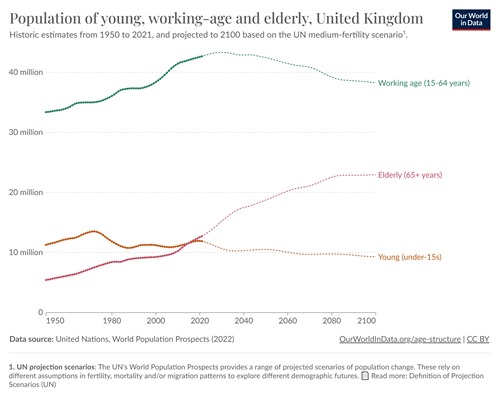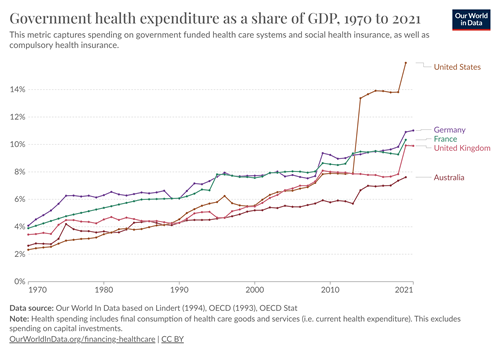
A seismic demographic shift is underway globally, marked by an expanding ageing population. This presents a significant social challenge and requires proactive measures to ensure the sustainability of healthcare systems as well as pension schemes.
According to the World Health Organisation (WHO), the number of people aged 60 and over will nearly double by 2050 and reach 22% of the population. Furthermore, the number of people aged 80 years or older is anticipated to triple between 2020 and 2050, reaching a staggering 426 million. By the year 2100, it is expected that 61% of the global population will be aged 65 or over.
Simultaneously, as the global population expands, there is an alarming decline in the working-age population, making it challenging to adequately provision for the elderly amid increasing competition for limited resources and capital. In the UK, the working-age population is expected to peak in five years (2029) at 43 million, subsequently entering a declining trend. In contrast, the population aged 65 (current retirement age) and above is projected to increase by 50% by 2050 to 19 million.

As the world grapples with this demographic shift, the demand for healthcare infrastructure and services is experiencing a significant surge. Health expenditure as a percentage of GDP has grown significantly since the 1970s in developed markets. For many of these developed markets, government health spending was below 4% of GDP in 1970, however, fast forward 50 years and that has at least doubled – or in some cases, even trebled.

Projections indicate a continued rise in healthcare expenditure due to the sustained demand for services associated with an ageing population. It is imperative for governments and private sectors to proactively anticipate these future needs, collaboratively allocating resources to expand care facilities, advance medical research on age-related diseases, and enhance accessibility to healthcare services. Increased investment in innovative technologies, such as artificial intelligence in diagnostics and personalised medicine, can further optimise healthcare delivery for the elderly.
There must also be a greater emphasis on preventive healthcare measures, not just in later life but from an early age. Encouraging healthy lifestyles, routine screenings, and early intervention can help reduce the impact and, in turn, alleviate the strain on healthcare systems, in turn leading to a more efficient workforce. Embracing technological advancements in healthcare, such as telemedicine, remote patient monitoring, and digital health solutions, can enhance the efficiency of service delivery. These innovations facilitate better management of chronic conditions and enable elderly individuals to receive care without overwhelming healthcare facilities. In essence, a comprehensive and proactive approach is essential to successfully navigate the challenges posed by an ageing population.
Related to this, and a system that is under equal strain, is pensions. To address this fiscal challenge, policymakers are contemplating raising the retirement age to strike a balance that ensures the sustainability of pension systems. In the UK, the pension age is set to rise from 66 to 67 before March 2028, with a further increase to 68 expected by 2044. Experts suggest that those born after April 1970 may need to work until the age of 71 before claiming their pension.
The financial strain on existing pension systems is evident, as longer life expectancies translate into extended periods of pension payouts. Analysis reveals that individuals now spend significantly more time in retirement compared to previous generations. Estimates suggest that pension spending worldwide could increase by 5% of GDP by 2050. Increasing the pension age is just one facet of the solution to the impending ageing demographic problem.
It is essential to take a comprehensive and proactive approach to navigate the challenges posed by an ageing population. The need for healthcare services, medical devices and pharmaceutical products will continue to increase for the foreseeable future, leaving us confident that investing in the best businesses in these sectors should hopefully continue to deliver attractive long-term returns.

